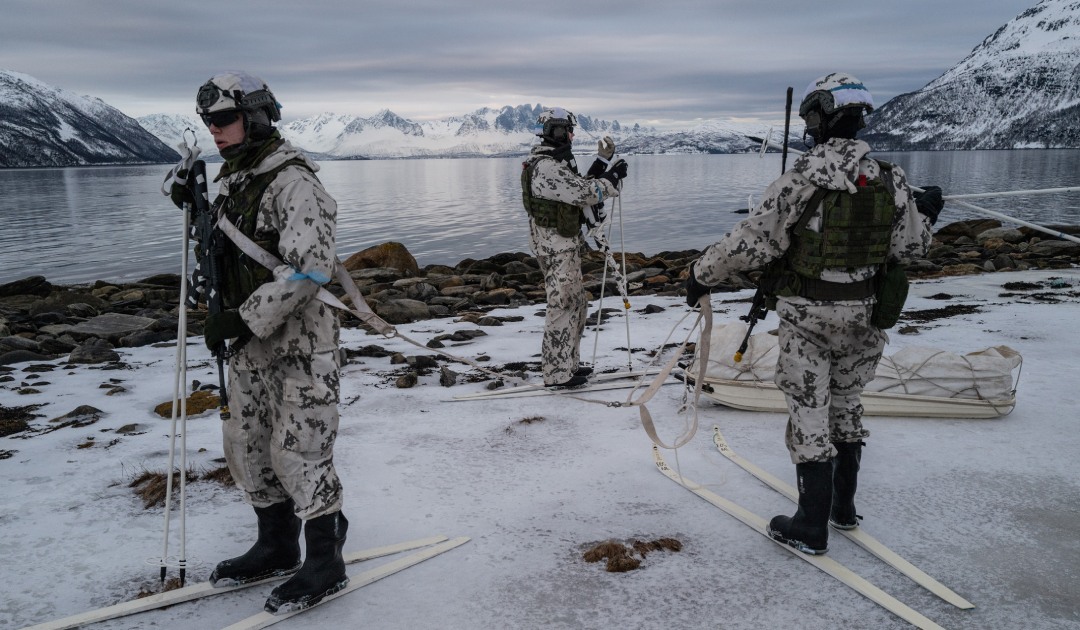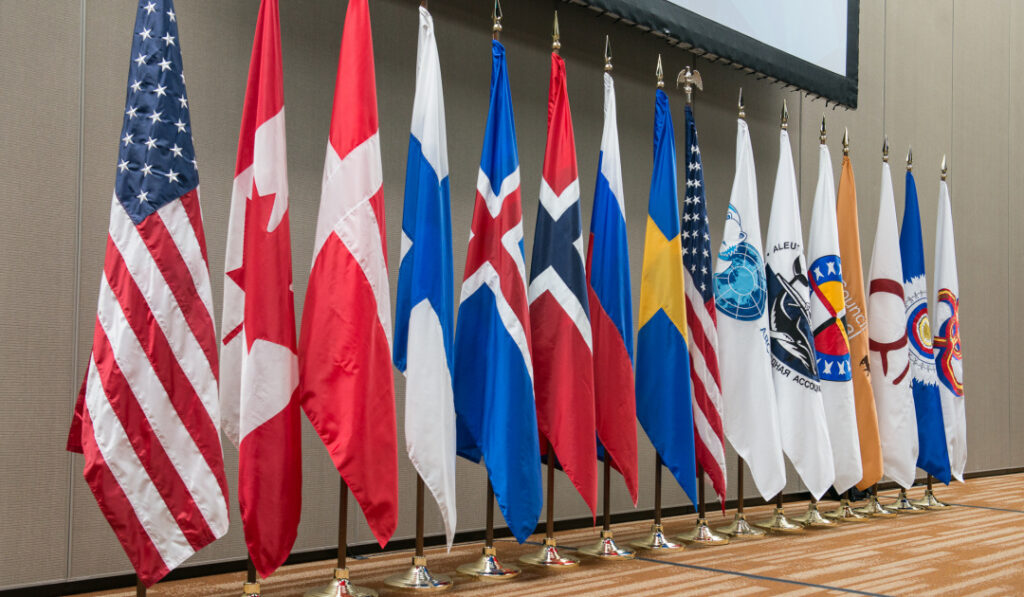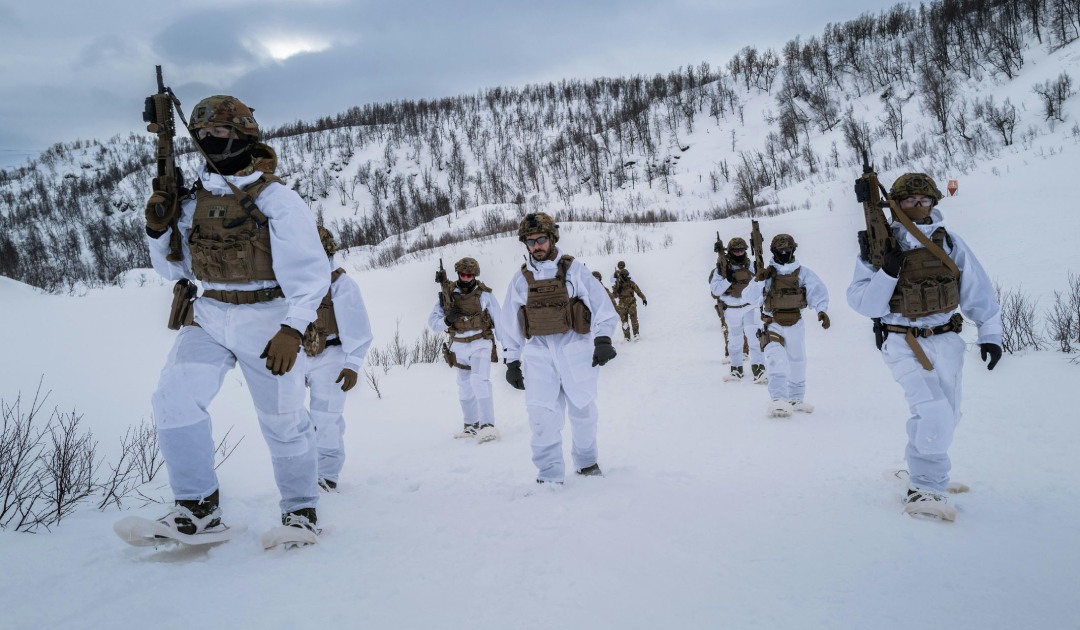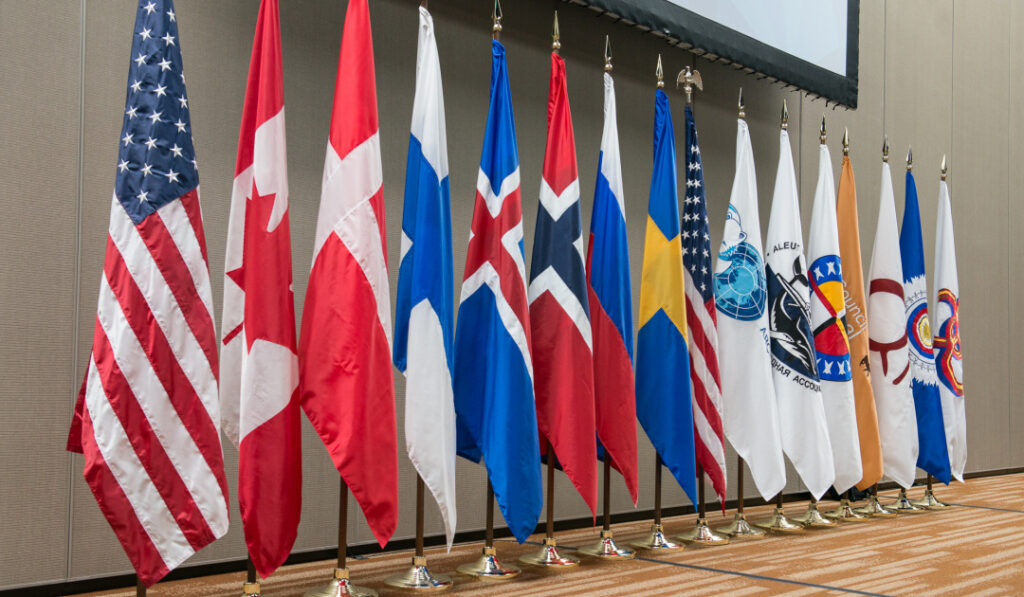
In this guest article, Doaa Abdel-Motaal, Visiting Professor of Polar Studies at Sciences Po, Paris, argues that the time is right to reduce tension in the Arctic and that in the current geopolitical situation de-escalation is possible.
The Arctic region is currently a zone of high tension. Following Russia’s invasion of Ukraine in 2022, the work of the Arctic Council was suspended for a year, with the other seven members refusing to engage under Russia’s chairmanship. Though the Arctic Council resumed its work in 2023 under the Norwegian chairmanship, relations with Russia remain strained, with cooperation far from pre-war levels. A similar governance breakdown occurred in the Barents Euro-Arctic Council, which led Russia to withdraw from the body in September 2023 after it was denied the rotating presidency.
Previously, in May 2022, Russia had also withdrawn from the Council of Baltic States when it was suspended over the Ukraine conflict – a body involving multiple actors from the Arctic, such as Norway, Finland and Sweden. These developments highlight an ever-widening divide, as Russia, a dominant player in the Arctic, finds itself increasingly isolated.
The geopolitical significance of Russia in the Arctic cannot be overstated. It possesses over half of the Arctic Ocean coastline and holds immense natural resources, including 69% of the region’s gas reserves. Russia’s marginalization in Arctic governance bodies creates a vacuum, but it may also offer a chance to rethink the structure of Arctic governance. The question we face is whether the tensions of today can lead to a safer Arctic tomorrow, as opposed to a region fraught with conflict.
While disarmament, demilitarization, and denuclearization remain unlikely in the medium and perhaps even the long-term, there is another path to containing conflict in the Arctic: neutralization. By declaring the Arctic a zone of peace, the world could contain the arms race and safeguard the region’s environmental and economic stability. Most importantly neutralization would allow the world to develop the two vital shipping lanes that are beginning to emerge in the Arctic in complete safety; resolving differences through diplomatic negotiations and not military muscle.
Neutralization would not require the removal of defensive or offensive capabilities; only a commitment to maintain the peace and stability that exists in the region. In doing so, Arctic policymakers would be drawing guidance from the Antarctic rule-book, the 1959 Antarctic Treaty, which demilitarized the continent and dedicated it to peace and scientific research. While they would not go as far as to demilitarize, they would nevertheless commit to peace and to the pursuit of diplomatic solutions.

With the Russia-Ukraine war taking a toll not only on the warring parties, but on nations to the East and West of the conflict that been forced to take sides, no one wants to see the current conflict extend to the Arctic. Furthermore, current tensions have resulted in an expansion of the North Atlantic Treaty Organization (NATO) up in the Arctic, with the inclusion of Finland and Sweden, turning the Arctic into a ‘NATO against Russia.’
But it is precisely this rebalancing of powers in the Arctic, and the creation of two dominant blocks, that could make de-escalation possible. Both sides are powerful, and a conflict could lead to mutual annihilation. The opportunity to neutralize the Arctic is now. However, reconfiguring Arctic governance requires an understanding of the political dynamics that have shaped the region’s current structure—and the missed opportunities along the way.
The Arctic Council originated from the Declaration on the Protection of the Arctic Environment and the Arctic Environmental Protection Strategy (AEPS), both initiated in the early 1990s. The AEPS, adopted in 1991 by the eight Arctic nations (Canada, Denmark, Finland, Iceland, Norway, Russia, Sweden, and the United States), aimed to address environmental concerns in the Arctic region, promoting cooperation on issues like pollution and biodiversity conservation. As countries pursued the objectives of the AEPS, negotiations to expand Arctic cooperation continued. While some countries, such as Canada, wanted to create a strong Arctic Council, the United States was reluctant.

In the 1970s, Canadian Professor Maxwell Cohen put forward a visionary proposal for an Arctic Basin Agreement, which aimed to address not just environmental protection but also peace and security in the Arctic. He was supported by the Canadian government. This proposal was rooted in a recognition of the region’s strategic importance and the potential for conflict. In 1992, Donat Pharand, seeking to revive the idea of an Arctic Basin Agreement, and of a strong Arctic Council, wrote:
“For an Arctic nuclear-free zone to be successful, it is suggested that at least four main points would have to be agreed upon: a complete ban of nuclear weapons; the delimitation of the denuclearized area (which should include the Kola Peninsula); a system of verification and control; and the inclusion of all circumpolar States. Since all of the Arctic States have renounced the deployment of nuclear weapons on their territory, except the former Soviet Union and the United States, the problem would be to convince the two superpowers.”
The proposal gained little traction in the 70s having been flatly rejected by the two nuclear powers of the Arctic and continued to garner little support in the 1990s. In fact, the United States has always feared that a strong Arctic governance body might threaten its strategic and economic interests. It insisted on setting up an Arctic Council as a purely consultative forum and ultimately agreed to the formation of a structure without legal personality.
It conceived of the Council as a high-level forum to promote cooperation among the Arctic states, with the involvement of Arctic indigenous communities – full stop. The result has been the creation of cash-strapped Arctic Council, that has had to survive for seventeen years without a permanent Secretariat.
The United States’ hesitancy was also fueled by the negotiations of the United Nations Convention on the Law of the Sea (UNCLOS), particularly Article 234 on Ice-Covered Areas, where the two countries with the biggest Arctic coastlines had been perceived as flexing their geographical muscle. Both the Soviet Union and Canada lobbied strongly for a provision that would allow them to extend their control over Arctic waters, in effect justifying their jurisdictions over the Northern Sea Route (NSR) and Northwest Passage (NWP), respectively.

Under Article 234, ice-covered waters around the globe are subject to a special legal regime that permits coastal states to adopt and enforce non-discriminatory laws for vessels traversing any ice-covered areas within their Exclusive Economic Zones (EEZs) in order to prevent marine pollution. Article 234 of UNCLOS, despite its lack of specificity regarding the Arctic, succeeded in appeasing big Arctic coastal powers for more than two decades.
The United States, while supportive of environmental protection in principle, had opposed this provision. It feared that allowing coastal states to extend their regulatory powers would restrict the freedoms of the high seas, potentially setting a precedent that could limit military and commercial navigation in key global waters. Following intense negotiations, Canada and the Soviet Union successfully framed Article 234 to simultaneously advance sovereign control and promote environmental stewardship in the Arctic, cementing their extended jurisdiction through UNCLOS. The United States, of course, never ratified UNCLOS.
This historical context shaped the eventual creation of the Arctic Council, with the United States not wanting a treaty specific to the Arctic Ocean that would open up avenues for stronger maritime claims or new rights and obligations. In addition, when the Council was formally established in 1996 through the Ottawa Declaration, it was explicitly prevented from addressing matters of military security—a direct result of America’s influence during the negotiations.
The Council’s scope was limited to environmental protection and sustainable development, reflecting the strategic concerns of the United States that a stronger governance structure might limit its military or navigational freedoms in the region. Canada’s early vision of an Arctic Basin Agreement and a strong Arctic Council with the power to address broader security issues was thus forever shelved, limiting the Council’s ability to respond to growing militarization in the region.
Today, we stand at a crossroads. The growing geopolitical divide, the militarization of the Arctic, and the vast resources at stake demand a re-evaluation of the governance framework. Neutralization, rather than demilitarization, offers a realistic and achievable goal. By insulating the Arctic from military conflict, we can preserve the region’s fragile environment and resources while fostering collaboration even in times of broader geopolitical tension. The time has come to build on the foundation of the Arctic Council and pursue a bolder, more comprehensive governance model that secures the Arctic for future generations.

Doaa Abdel-Motaal is a Visiting Professor of Polar Studies at Sciences Po in Paris. Her book Antarctica, the Battle for the Seventh Continent was nominated for the 2018 Mountbatten Best Book Award and presented at the Financial Times Literary Festival in Oxford. She was the Executive Director of the Rockefeller Foundation Economic Council on Planetary Health, and has worked in numerous international organizations.




